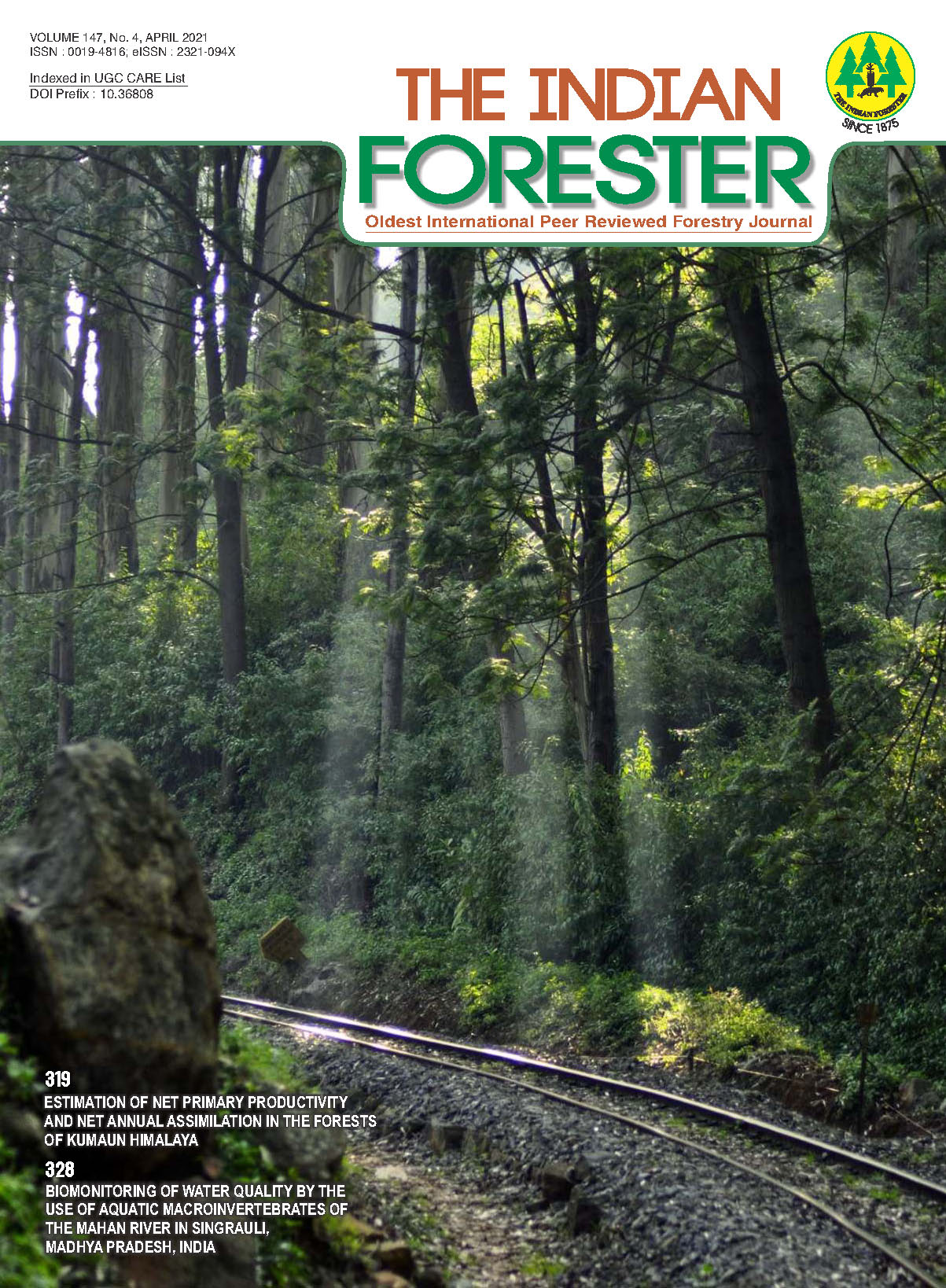New Distributional Records to Lichen Biota of Assam, India
DOI:
https://doi.org/10.36808/if/2021/v147i4/152523Keywords:
Biodiversity, Lichenized Fungi, North-East India, Mycobiota, Mega Diversity.Abstract
In a recent survey of lichen from five districts of Assam a total of 138 species belonging to 34 genera and 16 families were collected. Out of the total 37 species are being collected for the first time from Assam state. A large portion of these new reports belong to family Graphidaceae (15 species). In the whole study crustose lichens were dominant (123 spp.) with maximum representation of graphidaceous (59 spp.). Frequent encountering of previously unrecorded species from Assam indicates the lichen richness and insufficient exploration in the state.References
Aptroot A. (2012). A world key to the species of Anthracothecium and Pyrenula. Lichenologist, 44(1): 5-33.
Awasthi D.D. (1991). A key to the microlichens of India, Nepal and Sri Lanka. Bibliotheca Lichenologica, 40: 1-136.
Awasthi D.D. (2007). A Compendium of the Macrolichens from India, Nepal and Sri Lanka. Bishen Singh Mahendra Pal Singh, Dehradun, India.
Bajpai R., Nayaka S. and Upreti D.K. (2018). Extended distribution of lichen genera Heiomasia and Herpothallon in India. Phytotaxonomy, 17: 31-38.
Bungartz F., Dután-Patino V.L. and Elix J.A. (2013). The lichen genera Cryptothecia, Herpothallon and Helminthocarpon (Arthoniales) in the Galapagos Islands, Ecuador. Lichenologist, 45(6): 737-762.
Gogoi R., Joseph S., Nayaka S. and Yasmin F. (2019). Additions to the lichen biota of Assam State, India. Journal of Threatened Taxa, 11(6): 13765-13781.
Gupta P. and Sinha G.P. (2018). Lichen Flora of Assam. Bishen Singh Mahendra Pal Singh, Dehradun, India.
Singh K.P. and Sinha G.P. (2010). Indian Lichens: An Annotated Checklist. Bishen Singh Mahendra Pal Singh, Dehradun, India.
Jagadeesh Ram, T.A.M. (2014). The genus Herpothallon (Arthoniaceae) in the Andaman Islands, India. Lichenologist, 46(01): 39-49.
Joseph S., Nayaka S., Randive P. and Upreti D.K. (2018). New records and key to the species of Malmidea (lichenized Ascomycota) from India. Feddes Reportorium, 129(3): 189-192.
Kalb K., Staiger B. and Elix J.A. (2004). A monograph of the lichen genus Diorygma - a first attempt. Symbolae Botanicae Upsalienses., 34(1): 133-181.
Lücking R., Archer A.W. and Aptroot A. (2009). A worldwide key to the genus Graphis (Ostropales: Graphidaceae). Lichenologist, 41(4): 363-452.
Lücking R., Hodkinson B.P. and Leavitt S.D. (2017). The 2016 classification of lichenized fungi in the Ascomycota and Basidiomycota- Approaching one thousand genera. The Bryologist, 119(4): 361-416.
McCarthy P.M., (2003). Catalogue of lichen family Porinaceae. Bibliotheca Lichenologica, 87: 1-164.
Mishra G.K., Nayaka S. and Upreti D.K. (2019). Floristic diversity status assessment of lichens from Dima Hasao district, North East, India. International Journal of Plant and Environment, 5(2): 84–91.
Orange, A., James, P.W. and White, F.J. (2001). Microchemical Methods for the identification of Lichens. British Lichen Society, London.
Sharma B. and Khadilkar P. (2012). Four species of Diorygma from India. Mycotaxon, 199: 1-10.
Stirton J. (1881). On the vegetable parasite of the tea plant, more especially of Assam. Proceedings of Royal Philosophical Society of Glasgow, 13: 181-193.
Upreti D.K. (1994). Notes on corticolous and saxicolous species of Porina from India with Porina subhibernica sp. nov. Bryologist, 97: 73-79.
Upreti D.K. (1998). A key to the lichen genus Pyrenula from India, with nomenclatural notes, Nova Hedwigia, 66(3 - 4): 185-203.
Downloads
Downloads
Additional Files
Published
How to Cite
Issue
Section
License
Unless otherwise stated, copyright or similar rights in all materials presented on the site, including graphical images, are owned by Indian Forester.





